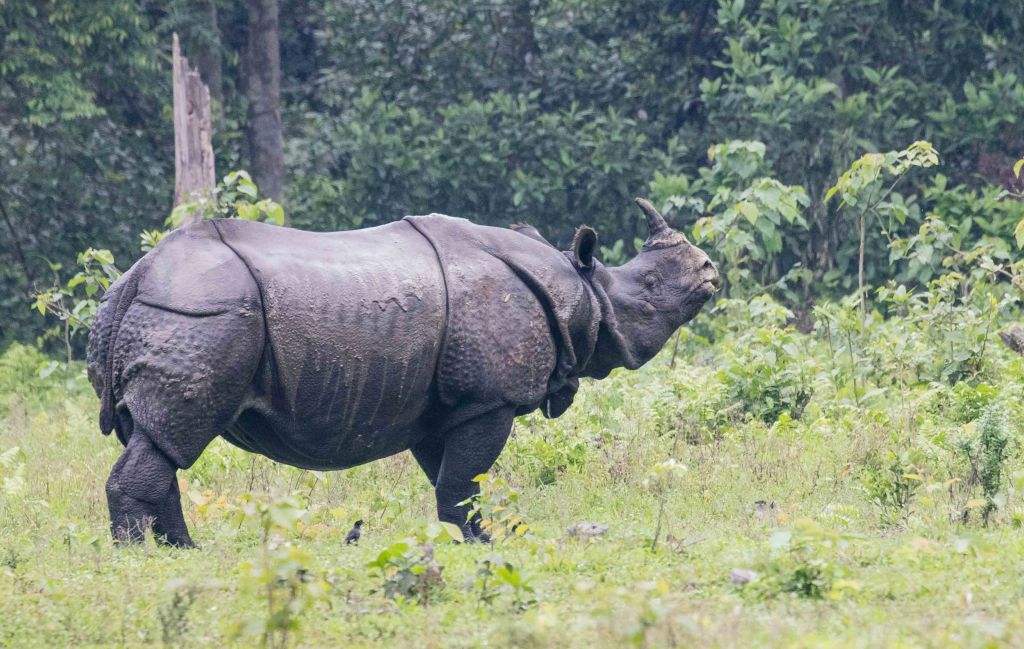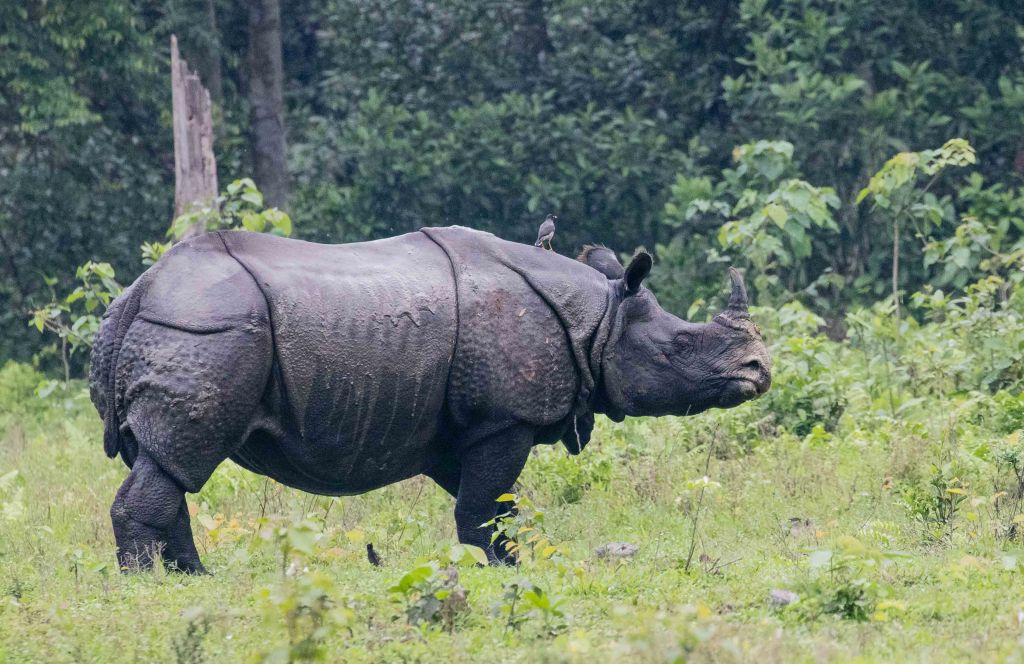Ever witnessed the raw power of a wild animal first hand? What if that wild animal was a Rhino? Well, I was lucky (or may be unlucky as per some) to witness it first hand. This blog post is about my experience of a “Rhino Encounter”.
To give you the right perspective of what a large and powerful animal an Indian Rhinoceros is, let me first give some facts about it. The Indian Rhinoceros, also known as the Greater One-horned Rhinoceros or Great Indian Rhinoceros, is a species native to the Indian subcontinent. An adult male weighs between 2.07 – 2.2 tonnes (i.e. 1877 kgs – 1995 kgs) and an adult female weighs around 1.6 tonnes (i.e. 1451 kgs). That is no “light” creature 🙂 . It is second in size only to the Asian Elephant in the mammals native to Asia. The Indian Rhino has only one horn on their snout. They have skin that is thick. So in short I would say that they are built like a tank.
Now coming to speed at which a Rhino can run, it is estimated that the Indian Rhino can run at speeds between 40 to 50 kmph. Do you think this is fast? Well, the average speed that a horse can run at is estimated to be 55kmph. Now what do you say? 😀 . Now imagine a creature of this size charging at vehicle at this speed with the intention of smashing into it because its feels threatened. Want to be in that vehicle? My friends and I almost experienced it first hand. Why almost? Read on 🙂 .
We had gone for a birding trip to Manas National Park (NP) in the state of Assam, India in early April. On the second day of the trip, our plan was to start from Bansbari range of Manas NP, drive through all the way to the border of Bhutan, enter Bhutan, go up to a specific village and return back; birding as we went along the route. Manas NP is known to have good wild life density due to various conservation efforts the the local communities and forest department. Although the mammals were not the main targets for us, we did expect to see them along with lots of birds. We saw many vehicles taking visitors on safari, all in hope of seeing the mammals I am sure. And we were not disappointed; we saw the Indian Hog Deer, Barking Deer, Asian Elephant and Black capped Langurs as we moved through the forest.
It was around 8am that we had out first grassland patch, albeit a small one between two forest sections. Just as our vehicle reached the edge, our guide noticed a lone Rhino near the other end. Our driver immediately slowed down and then brought our vehicle to a stop a good distance away. It was our first good view of one and hence we decided to observe it from the safe distance. The animal was grazing on the grass.




To know what happened after this, please watch the below video:
I cannot imagine what the passengers in the other vehicle must have experienced; we had heard very loud screams coming from the vehicle when it had gone out of our sight. I am sure it was terrifying. By God’s grace, the Rhino did not crash the vehicle from the front but instead decided to go by the side. This must have given the driver the opportunity to head back forward with his vehicle. We can only imagine what may have happened. Whatever it was, I must credit the driver of the vehicle with maintaining his presence of mind to recover from the terrible situation.
Would I have been able to get a better perspective if I had been in that vehicle as the action happened? A definite yes! Do I wish that I was in that vehicle when it happened? Hell no!! The experience of our guide (Rustom Basumatary) and driver (Mwjwmsar Basumatary) was what got us to escape being in that situation. And I wish no one else has to go through it. But the reality is that such a scenario is a possibility when you are on a safari in any national park around the world. After all when on a safari in a national park, we are in the territory of the wild animal. The best thing we can do is be sensible and maintain a respectable space for the animals.
Did you experience something similar in your adventures? Let me know as comments to this post.

Superb moments captured and narrated here.
Aa you mentioned “be sensible and maintain a respectable space for the animals”…👍
LikeLiked by 1 person
Absolutely!
LikeLike
Very well articulated and a must read for all ! I would recommend readers to treat this seriously and follow instructions and stay safe ! This is one helluva experience , the 3 of us will never ever forget. 🙂
LikeLike
Very well-articulated Thomas Job. This is a must read for all those travelers going birding / wildlife. Safety above all.
This is an episode we 3 will never forget.
Fantastic video.!!!
LikeLiked by 1 person
An unforgettable experience indeed Vignesh.
LikeLiked by 1 person
Nice capture. Thank God no one was hurt. But I’m sure I don’t want such close encounters & don’t want you to have them either. Watching from far was the best thing that happened that day.
LikeLiked by 1 person
Yes I share your view 🙂
LikeLike
Indian forests are integral to the country’s environmental health, providing essential ecological services and supporting a myriad of life forms. Understanding the types and locations of these forests is crucial for their conservation and sustainable management. Effective preservation efforts are necessary to ensure the continued biodiversity and ecological balance of these vital natural resources.
https://www.indianetzone.com/2/indian_forestsa.htm
LikeLike